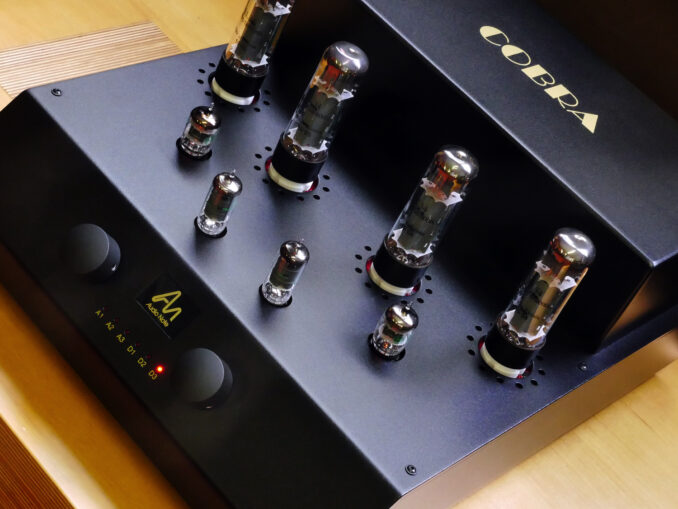
Some hifi companies have name-magic. As if just saying the name conveys meaning, to those in the know. Audio Note is one such company that seems to have a near mystical quality to it, conveying a deep connection to the inner workings of music reproduction. Or so it seems to me.
The Audio Note Cobra includes 3 line level RCA inputs that are joined by 3 digital inputs — Coax, Toslink, and USB. As is the case with Audio Note’s digital products, the DAC inside the Cobra is somewhat anachronistic, in that it employs the Philips TDA1543 D/A converter chip, a 16-bit beauty. This means that if you send the Cobra 24-bit data, the DAC inside will truncate that file to 16-bits. You can also choose to do this conversion in software which is how I rolled for this review, using Roon to send the Cobra only 16-bit data. In my experience, the less work a DAC has to do, the better the output will be. To further mystify matters, the Coax input can accept PCM data up to 176.2kHz, Toslink hits its limit at 96kHz, while USB is the stingiest of the bunch with a 48kHz max sample rate.

These digital facts may mean something bad to some people and something good to others. In my experience, digital theorizing is a pleasant enough pastime but real results can only be found through listening. With an open mind, where possible. And don’t let that grounding terminal fool you — there’s no phono section in the Cobra but Audio Note provides that ground in case you encounter hum from some other source. I didn’t.
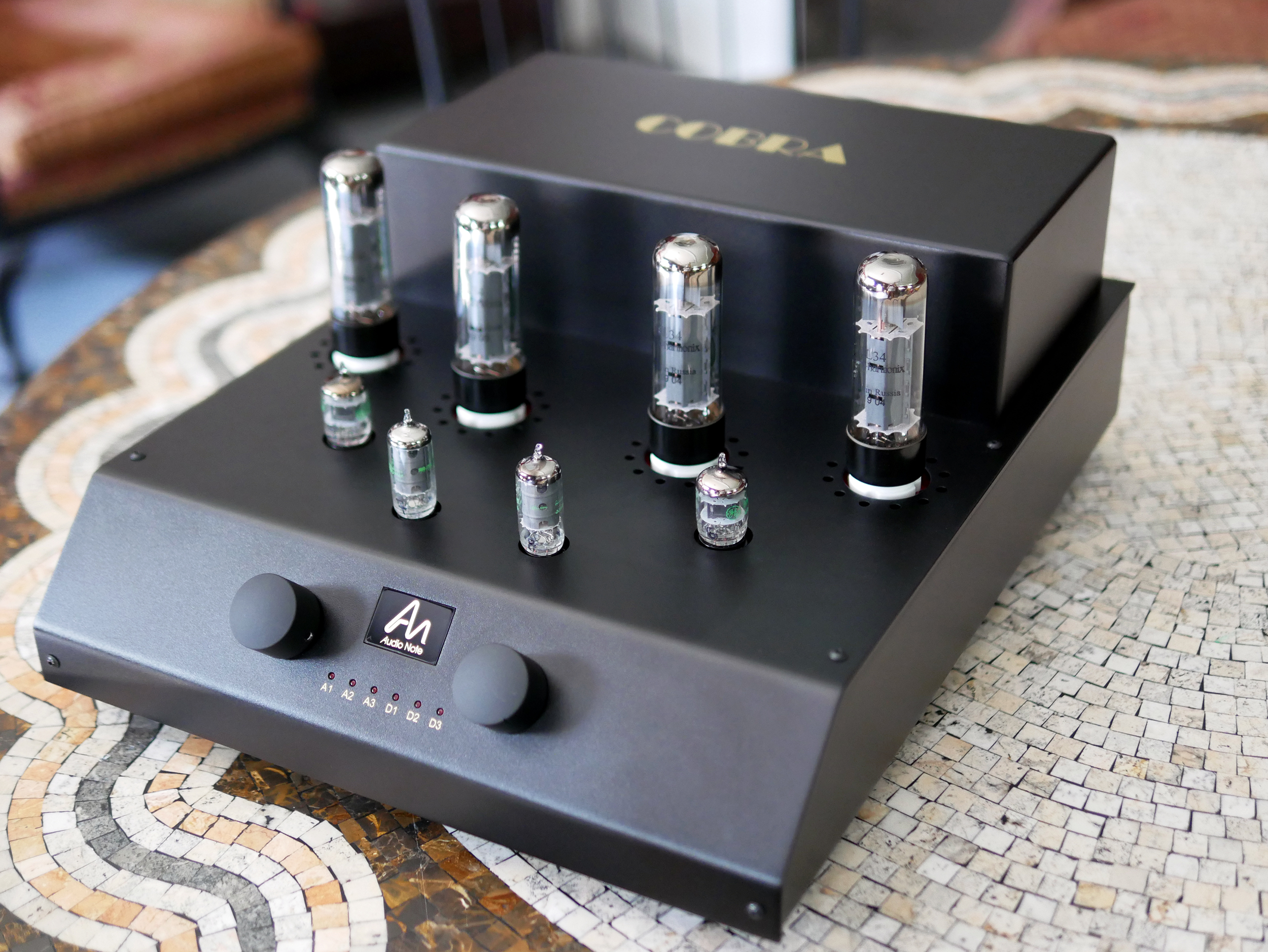
On the amplification side, the Cobra is a Pure Class A push-pull pentode design using a quad of current production Electro-Harmonix EL34s in the output stage producing 28 watts per channel. For the input and driver stages, Audio Note chose to go with NOS (New Old Stock) JAN (Joint Army & Navy) tubes from GE, with 2x GE 6AU6s, a miniature pentode, in the input stage, and 2x GE 5670 double triodes driving those pentodes. If you do some research into these tubes, you’ll see they can all be had on the cheap, making ongoing tube maintenance very affordable. Nice. If we peek inside, we’re looking at a circuit board layout and it’s worth noting that the output tubes are self biased, look ma no manual adjustments, and power rectification is of the solid state variety.
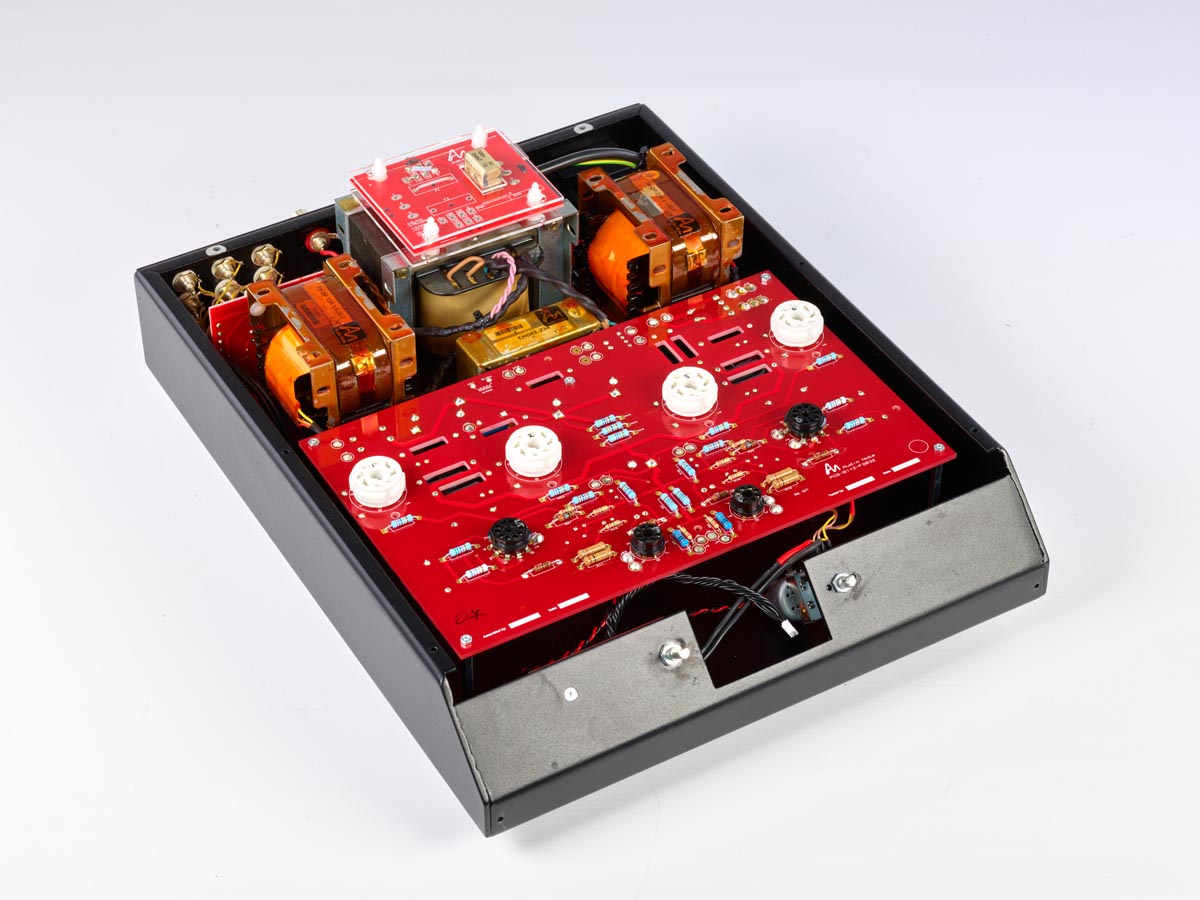
A pair of custom Audio Note C-core output transformers are included, while the power supply is a multi element design with choke smoothing, ensuring precise operation of each circuit stage, whilst a separate DC supply feeds the valve filaments. The black metal body features a slanted front panel, which I found surprisingly welcome as it made using the two front knobs, one for input the other for volume, that much more accessible from a standing position. The front panel is also home to six LEDs which indicate the active input.
The Cobra weighs in at nearly 30 lbs, a lot of that bulk is due to those custom C-core transformers. There is no tube cage provided, so caution should be used when finding a home for the Cobra because those EL34s run hot. A remote is included that offers volume control, input selection, and mute. Overall, I think the Audio Note Cobra is a nice package.
I used two digital sources for this review, sending the Cobra USB from a Raspberry Pi 4 and Coax out from a Primare NP5 Prisma both running as Roon endpoints. The Cobra drove the DeVore Fidelity O/96 speakers for the duration of this review. Audio Note also sent along their Lexus USB cable which I used along with cables from AudioQuest for everything else. I spent most of my listening time using the Cobra’s internal DAC, which struck as being very well suited for the job.
Lastly, a few words from the Cobra User Manual:
Congratulations on your purchase of the Audio Note (UK) COBRA Integrated Amplifier.
It is a Push Pull, Pure Class A valve design, offering an outstanding level of performance and value.
It has been specifically engineered for sonic performance rather than technical specification, and fulfills all Audio Note (UK) Level 1 criteria:
Pure Class A Push-Pull Pentode operation
Materials and component quality
Consider that a warning label for buyers who buy according to specs instead of listening to music or for those poor souls who live in fear of a bad review of a product they love.
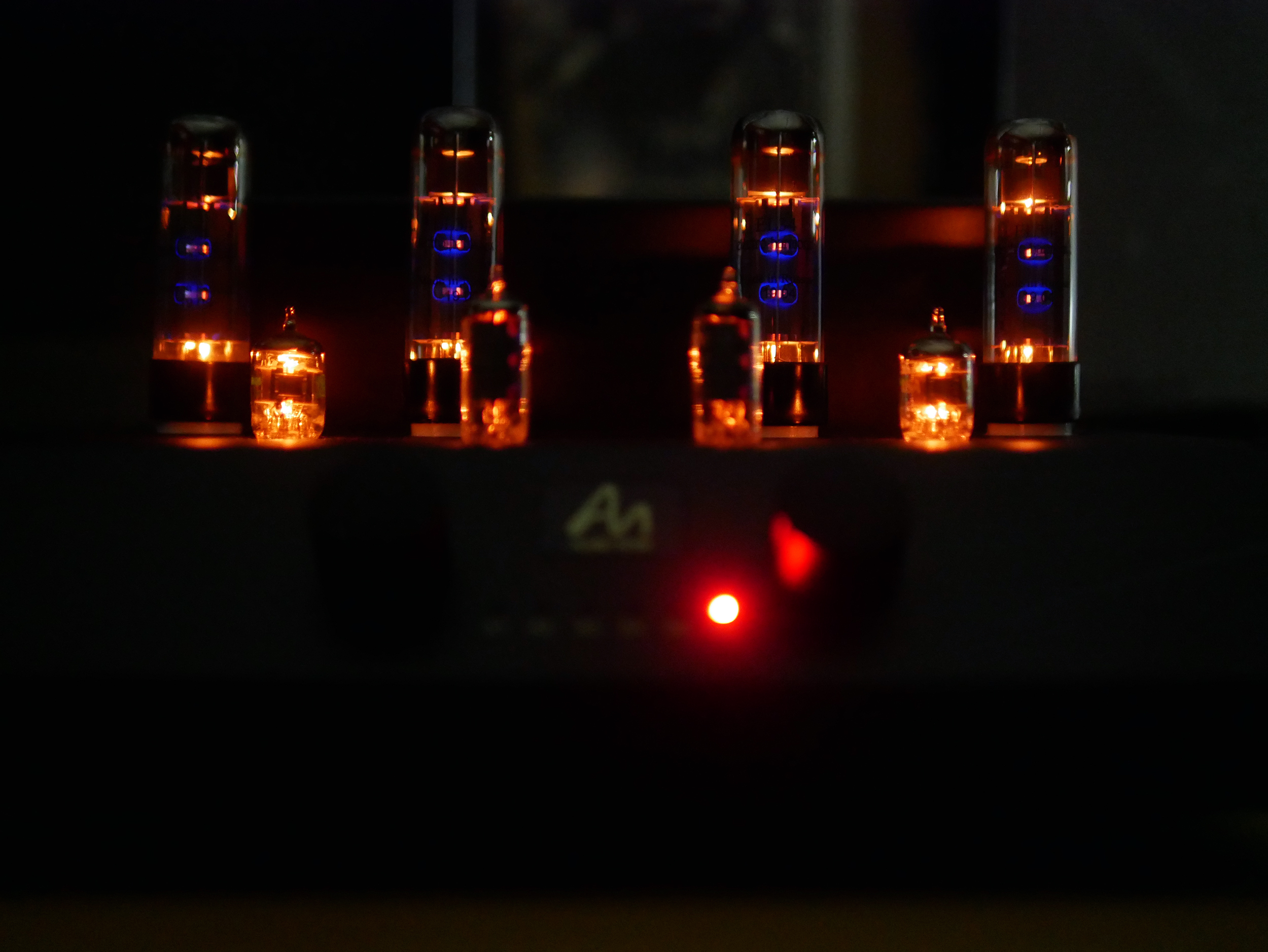
Magical Mystery
There’s really no way to talk about amplifier topology without being obvious, boring, or cliche ridden. Whether its solid state’s iron grip on the bottom end, a switching amp’s speed, or a tube amp’s bloom, we’ve all been there and done that way too many times. In my experience, these piecemeal props create faulty generalizations that do not exist out there in the real world. In other words, it’s time to stop being surprised on how an amplifier sounds, or a DAC for that matter, based solely on its topology.
It took some time for the Audio Note Cobra to warm up after its arrival in the Barn. I don’t know exactly how much time, but my initial impressions were erased as the Cobra reached thermal equilibrium and everything settled in from its harrowing journey to NJ. I say harrowing because I worked for UPS loading trucks and its the correct word to describe shipping and receiving. Audi Note took the extra precaution of strapping the double-boxed Cobra to a small wooden palette, which in my experience serves as a dare to package handlers, screaming “Treat me even worse.”

28 watts of output power can be a lot of output power, as long as the speakers you’re trying to drive present a reasonable load. Audio Note points out in their literature for the Cobra that the quality of its output transformers help account for the amp’s ability to deliver great bass response, and based on what I heard during its stay, I can attest to that ability. Driving the relatively easy to drive DeVore Fidelity O/96 (Frequency Response: 26Hz-31kHz, Sensitivity: 96 dB/W/M, Impedance: 10 ohms), the combo produced a big, as in huge, sound image that was as taut, rich, and rewarding as the music played through it. While I wouldn’t describe the Cobra’s bottom end grip as being iron-like, for obvious reasons, I can tell you that bass lines were as easy to follow as a black bear in a snow storm while also being of full voice. Nothing thudding, loose, sloppy or boomy about it. Cliche’s covered.
There are times when I want nothing more than piano. No words, no geetars, no fiddles. Just piano. And in these times, I normally reach for Martha Argerich, Alfred Brendel, Maurizio Pollini, Krystian Zimerman, Cecil Taylor, and Nils Frahm, among others. Schubert’s last three piano sonatas, D 958, 959 and 960, as performed by Alfred Brendel, ranks among my go-to recordings when I want to be overwhelmed, i.e. stop thinking my thoughts and try on someone else’s. These works were largely neglected during the composers lifetime, and only gained broad critical acceptance nearly a century after Schubert’s untimely death at 31 years of age in 1828. With the Cobra / DeVore combo, Brendel’s piano filled the barn with powerful sound, and even more powerful emotions. I’m talking about a convincing representation, one that allows for a deep journey into the music, unencumbered by thoughts of reproduction. To my mind, this is exactly where we want to be.
Beth Gibbons (Portishead) with Rustin Man’s (ex-Talk Talk bassist Paul Webb) lovely and quirky Out of Season also saw a mixed critical reception:
“Out of Season plays to Beth Gibbons’ strengths as a vocalist and songwriter more than anything released prior by Portishead.” All Music
“If only the rest of Out of Season displayed that energy. Instead, we’re quickly plunged into moodiness for the sake of moodiness, overwhelmed by Gibbons’ frankly unpitiable obsession with her own misfortune.” Pitchfork
Did you ever think that negative reviews are written by people who are more concerned with their own notoriety than in giving the work of others its due? I think that all of the time, and it applies to hifi reviews as well.
Back to the music, Beth Gibbons and Rustin Man throw everything (mostly acoustic) but the kitchen sink into Out of Season, which makes it a perfect album to see if things sound like they sound in real life. The Cobra proved to be more than up to this task, delivering a rich and colorful rendition that once again led me to the heart of the matter and away from the bits and bobs of bits. This music calls for reproduction that is detailed and delicate, one that doesn’t skimp on subtle movements, with a fluid and languid flow and the Cobra squeezed this bitter fruit from Out of Season with grace.
I’ve been on a bit of post-punk tear of late, what with all of the monstrously good music being released like Dry Cleaning’s New Long Leg and Black Country, New Road’s For the first time which also throws lots of unexpected sounds into the routine mix. As you can imagine by now, the Cobra / DeVore combo once again proved to be masters of musical engagement, getting the flow just right with the full voice of each element sounding as rich and fully formed as the real thing. When music reproduction is hitting on all cylinders, as was the case here, I find myself relaxing and forgetting, which is the ideal state of being to receive music’s full force. The only enemy in this equation being time, which is kinda inevitable.
I did use the totaldac d1-tube DAC/Streamer (review) with the Cobra and as expected, music was all that more fully fleshed out. Expected because adding a DAC that costs more than the Cobra should offer sonic improvements. I mention this because to my mind the Cobra as an integrated amplifier can certainly perform up to standards higher than one might expect based on price alone.

While no review is complete without a comparison, I didn’t spend much time A/B’ing my way into confusion. To my mind, due to the idiosyncratic nature of the Cobra’s DAC coupled with its tubed nature, I get as uncomfortable when I hear an amp described as being “tubed” as I do when I hear the word “vinyls”, there’s really no point in talking about how the Cobra stacks up against something like the wonderful and powerful Bryston B135 Cubed Integrated Amplifier
(review) or the budget friendly smooth operating Hegel H95 (review).
While it has been some time since I had the beauty of a beast Line Magnetic LM-845iA Integrated Amplifier (review) here, it costs $4895 but does not include a DAC so its fairly on par for a price-wise comparison with the Cobra. The LM amp is a single-ended, point-to-point wired design, using a pair of 845 triodes in Class A for about 22 watts of output power. On paper, that’s less power than the Cobra but don’t let numbers fool ya, the Line Magnetic is one powerful sounding amplifier, while also being capable of delicacy and nuance. Based on memory, and a more recent listen at a friend’s place, I would say that the Cobra is a bit more laid back sounding, where the LM can come across as being more forceful and less relaxed as compared to the Cobra. Music through the Line Magnetic sounds big and powerful with endless drive, while the Cobra comes across as being more concerned with nuance, flow, and ease. I prefer both presentations.
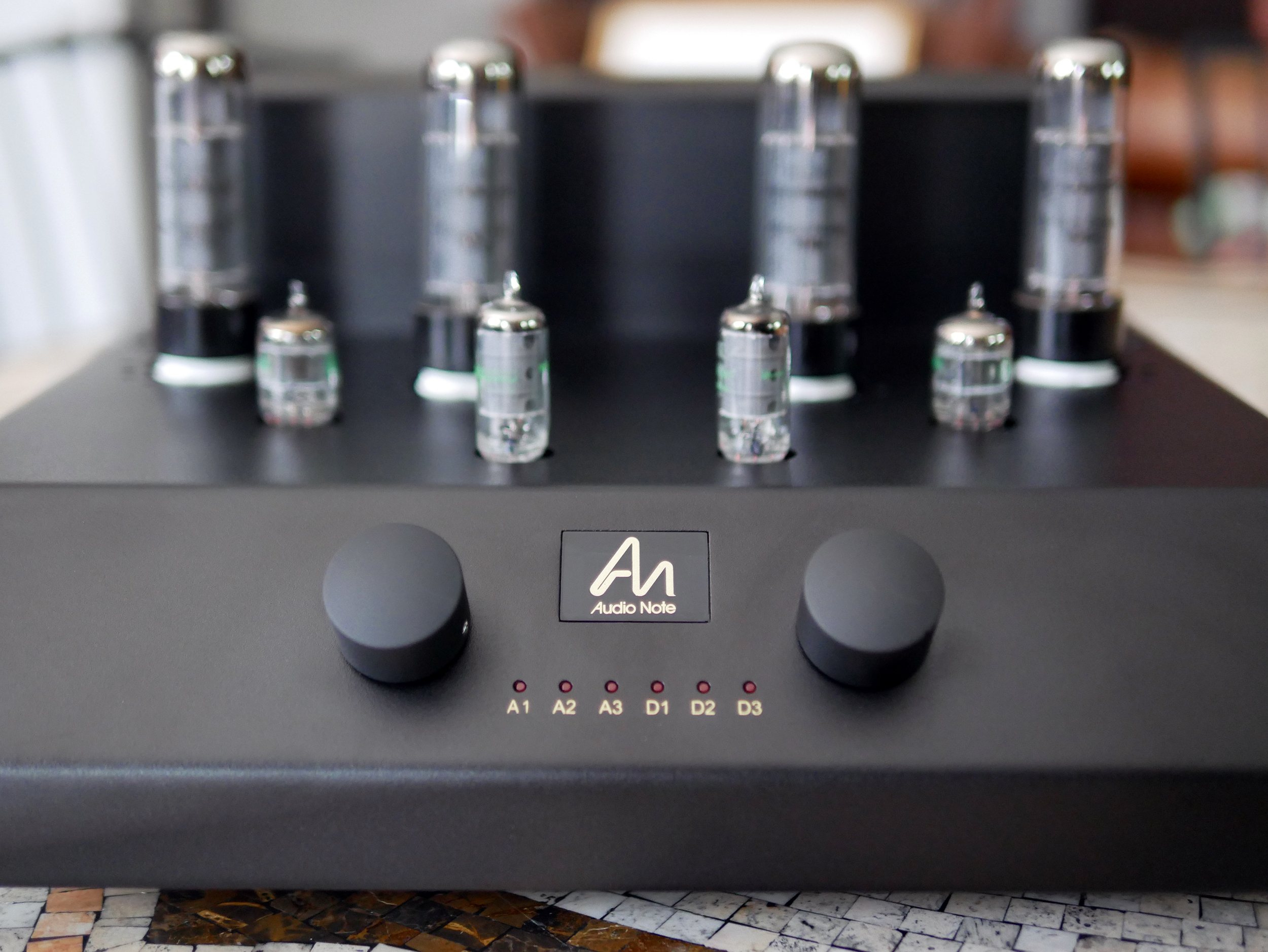
A Grand Tour
The Audio Note Cobra delivers what I want from an integrated amplifier and then some, offering a presentation that is rich and rewarding. If your interest has been piqued by the Cobra, I suggest moving in for a listen. Your time will be well rewarded.
Here’s another take on the Audio Note Cobra, from our friends at FIDELITY International.
Audio Note Cobra Integrated Amplifier DAC
Price: $5457.90
Technical Specifications
Maximum Output: 28 Watts per channel
Valve Complement:
4 x EL34
2 x 6AU6
2 x 5670
Dimensions: 340(w) x 199(h) x 451(d) mm incl. valves, knobs and connectors
Company Website: Audio Note (UK)

